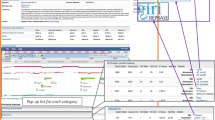Abstract
The techniques that are usually used to detect transposable elements (TEs) in nucleic acid sequences rely on sequence similarity with previously characterized elements. However, these methods are likely to miss many elements in various organisms. We tested two strategies for the detection of unknown elements. The first, which we call “TBLASTX strategy,” searches for TE sequences by comparing the six-frame translations of the nucleic acid sequences of known TEs with the genomic sequence of interest. The second, “repeat-based strategy,” searches genomic sequences for long repeats and clusters them in groups of similar sequences. TE copies from a given family are expected to cluster together. We tested the Drosophila melanogaster genomic sequence and the recently sequenced Anopheles gambiae genome in which most TEs remain unknown. We showed that the “TBLASTX strategy” is very efficient as it detected at least 332 new TE families in D. melanogaster and 400 in A. gambiae. This was unexpected in Drosophila as TEs of this organism have been extensively studied. The “repeat-based strategy” appeared to be very inefficient because of two problems: (i) TE copies are heavily deleted and few copies share homologous regions, and (ii) segmental duplications are frequent and it is not easy to distinguish them from TE copies.
Similar content being viewed by others
References
G Achaz P Netter E Coissac (2001) ArticleTitleStudy of intrachromosomal duplications among the eukaryote genomes. Mol Biol Evol 18 2280–2288 Occurrence Handle1:CAS:528:DC%2BD3MXptFCrsLg%3D Occurrence Handle11719577
SF Altschul W Gish W Miller EW Myers DJ Lipman (1990) ArticleTitleBasic local alignment search tool. J Mol Biol 215 403–410 Occurrence Handle10.1006/jmbi.1990.9999 Occurrence Handle1:CAS:528:DyaK3MXitVGmsA%3D%3D Occurrence Handle2231712
SF Altschul TL Madden AA Schäffer J Zhang Z Zhang W Miller DJ Lipman (1997) ArticleTitleGapped BLAST and PSI-BLAST: A new generation of protein database search programs. Nucleic Acids Res 25 3389–3402 Occurrence Handle9254694
JA Bailey AM Yavor HF Massa BJ Trask EE Eichler (2001) ArticleTitleSegmental duplications: organization and impact within the current human genome project assembly. Genome Res 11 1005–1017
E Berezikov A Bucheton I Busseau (2000) ArticleTitleA search for reverse transcriptase-coding sequences reveals new non-LTR retrotransposons in the genome of Drosophila melanogaster. Genome Biol 1 research0011.1–0011.1 Occurrence Handle10.1186/gb-2000-1-6-research0012
F Brunet T Giraud F Godin P Capy (2002) ArticleTitleDo deletions of Mos1-like elements occur randomly in the Drosophilidae family? J Mol Evol 54 227–234 Occurrence Handle10.1007/s0023901-0004-2 Occurrence Handle1:CAS:528:DC%2BD38Xht1Kjs7g%3D Occurrence Handle11821915
KM Chao J Zhang J Ostell W Miller (1995) ArticleTitleA local alignment tool for very long DNA sequences. Comput Appl Biosci 11 147–153 Occurrence Handle1:CAS:528:DyaK2MXms12gsb0%3D Occurrence Handle7620986
B Charlesworth CH Langley (1989) ArticleTitleThe population genetics of Drosophila transposable elements. Annu Rev Genet 23 251–287 Occurrence Handle10.1146/annurev.ge.23.120189.001343 Occurrence Handle1:STN:280:By%2BC2cnitFE%3D Occurrence Handle2559652
SR Eddy (1998) ArticleTitleProfile hidden Markov models. Bioinformatics 14 755–763 Occurrence Handle10.1093/bioinformatics/14.9.755 Occurrence Handle1:CAS:528:DyaK1MXktlCmtQ%3D%3D Occurrence Handle9918945
D Gusfield (1997) Algorithms on strings, trees, and sequences. Computer sciences and computational biology. Cambridge University Press Cambridge 325–329
InstitutionalAuthorNameInternational Human Genome Sequencing Consortium (2001) ArticleTitleInitial sequencing and analysis of the human genome. Nature 409 860–921 Occurrence Handle1:CAS:528:DC%2BD3MXhsFCjtLc%3D Occurrence Handle11237011
J Jurka (2000) ArticleTitleRepbase update: A database and an electronic journal of repetitive elements. Trends Genet 16 418–420 Occurrence Handle1:CAS:528:DC%2BD3cXmvFygtr0%3D
Kapitonov VV, Jurka J (1998–2002) Repbase update (www.girinst.org/Repbase_Update )
VV Kapitonov J Jurka (2001) ArticleTitleRolling circle transposons in eukaryotes. PNAS 98 8714–8719 Occurrence Handle10.1073/pnas.151269298 Occurrence Handle1:CAS:528:DC%2BD3MXls1WitLo%3D Occurrence Handle11447285
EW Myers W Miller (1988) ArticleTitleOptimal alignments in linear space. Comput Appl Biosci 4 11–17 Occurrence Handle1:CAS:528:DyaL1cXitFyls7Y%3D Occurrence Handle3382986
EW Myers GG Sutton AL Delcher et al. (2000) ArticleTitleA whole-genome assembly of Drosophila. Science 287 2196–2204 Occurrence Handle10.1126/science.287.5461.2196 Occurrence Handle1:CAS:528:DC%2BD3cXitlSnsrg%3D Occurrence Handle10731133
DA Petrov DL Hartl (1998) ArticleTitleHigh rate of DNA loss in the Drosophila melanogaster and Drosophila virilis species groups. Mol Biol Evol 15 293–302 Occurrence Handle1:CAS:528:DyaK1cXhtlyit7g%3D Occurrence Handle9501496
H Quesneville D Anxolabéhère (2001) ArticleTitleGenetic algorithm based model of evolutionary dynamics of class II transposable elements. J Theor Biol 213 21–30 Occurrence Handle10.1006/jtbi.2001.2401 Occurrence Handle1:CAS:528:DC%2BD3MXot12gtrc%3D Occurrence Handle11708852
AF Smit (1999) ArticleTitleInterpersed repeats and other mementos of transposable elements in mammalian genomes. Curr Opin Genet Dev 9 657–663 Occurrence Handle1:CAS:528:DC%2BD3cXhslOisA%3D%3D Occurrence Handle10607616
Author information
Authors and Affiliations
Corresponding author
Rights and permissions
About this article
Cite this article
Quesneville, H., Nouaud, D. & Anxolabéhère, D. Detection of New Transposable Element Families in Drosophila melanogaster and Anopheles gambiae Genomes . J Mol Evol 57 (Suppl 1), S50–S59 (2003). https://doi.org/10.1007/s00239-003-0007-2
Received:
Accepted:
Issue Date:
DOI: https://doi.org/10.1007/s00239-003-0007-2




